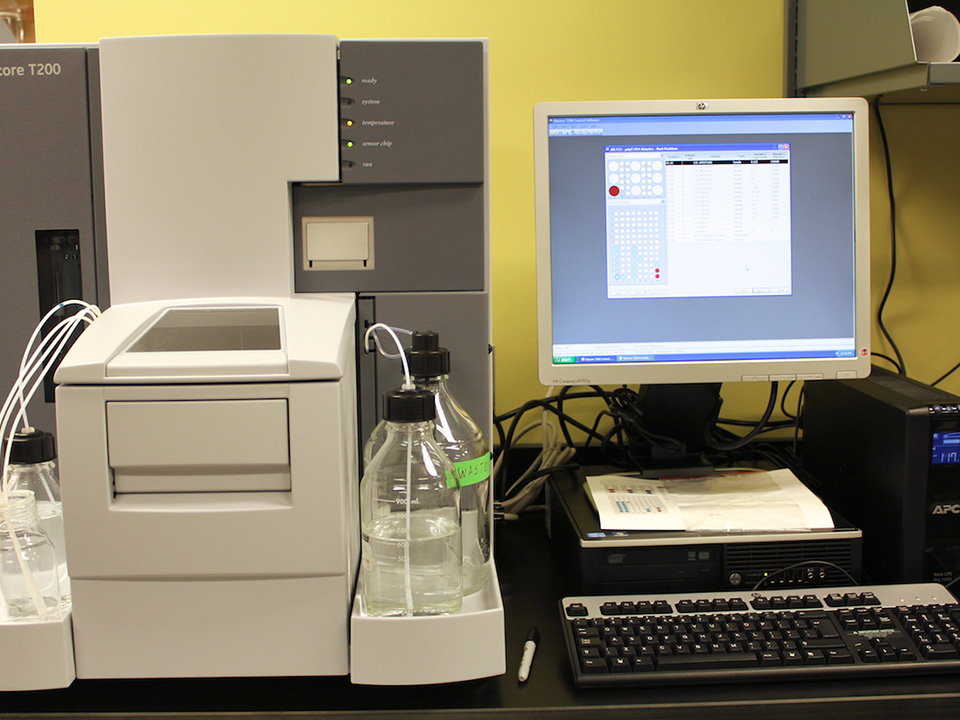Tool kit: GE T200 Surface Plasmon Resonance System
Surface plasmon resonance (SPR) is a technique that enables researchers to study biomolecular interactions as they happen, without having to label molecules with fluorescent or radioactive tags, which can compromise activity. Sunnybrook Research Institute senior scientist Dr. Jean Gariépy acquired GE's Biacore T200 SPR system for the development of targeted therapies and imaging tools for cancer and other gene-based disorders.
Part of the lab's work is the design of ligands (signal-triggering molecules) that bind to therapeutic targets to alter cellular functions associated with diseased cells. The system provides the group with quantitative data on ligand binding, specifically, rates of association and dissociation, and the strength of interaction between engineered molecules and target proteins. This information identifies which ligands show therapeutic potential and should thus be tested further.
"Having this allows us to rapidly test all of our synthetic ligands. You get on- and off-rates in real time," says Aaron Prodeus, a master's student in Gariépy's lab who is developing DNA aptamers to treat cancer. These are short, single-stranded DNA sequences that are manipulated into 3-D structures for interaction with a protein target. "If we generate an aptamer or antibody that sticks and doesn't let go for hours, I can tell you that based on this machine because it's monitoring that release over time."
Analytes—including proteins, nucleic acids, lipids and carbohydrates—are flowed from the sample compartment, through a fluidic system and across a gold-plated sensor chip, affixed onto which are probe molecules. Light passes through a prism, reflects off the sensor chip and into a detector. Based on the interaction happening on the sensor chip, there is a change in the direction of the reflected light. A computer hooked up to the instrument displays the shift on a reflectivity curve over time.
In addition to measuring the affinity and kinetics of binding events, the system can do high-throughput runs using 96- or 384-well plates—unattended. "We can test libraries of compounds for activity against our target. It's all automated. You just put your samples into the plate in the right order, hit 'go' and come back. It can even do up to 48-hour experiments if you have enough samples," says Prodeus.
The system is worth $440,000 and was purchased with funding from the Canada Foundation for Innovation and the Ontario Ministry of Research and Innovation.
— Alisa Kim



